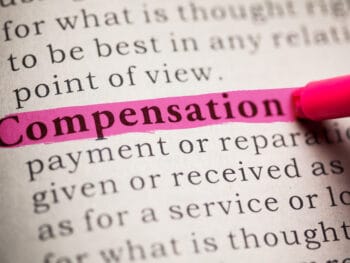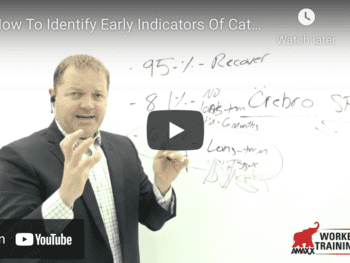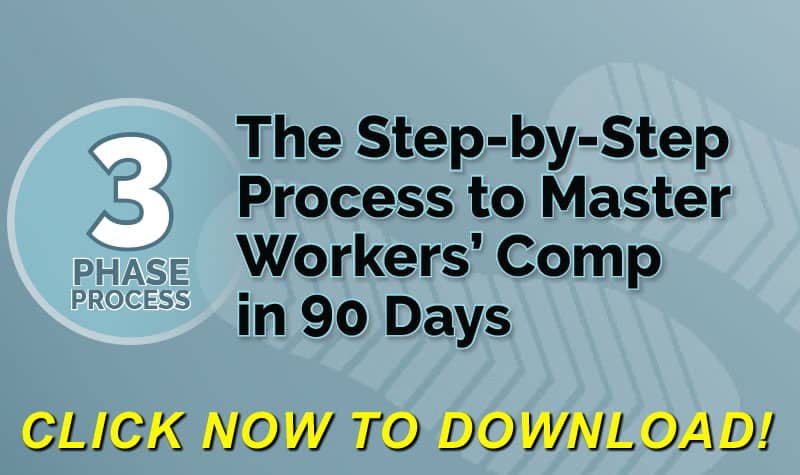
Reserve is Dollars Necessary to Pay Financial & Legal Obligations
The accurate statement of what the legal liability (reserve) is on a work comp file is often a challenge faced by the workers’ compensation claim adjuster. The information needed to establish a precise reserve is normally not available at the time of the assignment of the claim to the adjuster. Often the necessary medical information to establish the reserve will not be forthcoming until weeks or even months into the claim.
Click Link to Access Free PDF Download
There are two primary approaches adjusters use to set the initial reserve early in the claim file when the necessary medical information is not available. The first approach is for the adjuster to “guesstimate” (a combination of guessing and estimating) based on what claims with similar injuries have cost in the past. The second approach is to use a statistical reserve where all claims have the same initial reserve amount based on the historical average cost of claims. All insurers and third-party administrators (TPA) require the adjuster to revisit the initial reserve, whether an estimated reserve or a statistical reserve and revise it when the necessary medical information has been obtained.
Reserve Worksheet Consists of Medical, Indemnity, and Expense
To establish the proper, most accurate reserve, the adjuster will utilize a reserve worksheet. The worksheet will be broken down into three categories – medical, indemnity, and expense (some insurers and TPAs break the expense category into legal expenses and non-legal expenses).
Medical
To establish the amount of the medical reserve, the adjuster will analyze the medical reports to provide an informed estimate of the cost in the following sub-categories:
- Physicians
- Specialists
- Diagnostic Testing
- Hospitals
- Physical Therapy / Occupational Therapy
- Pharmacy
- Transportation (to/from medical care)
- Attendant Care
Few work comp claims will require an estimated amount in every medical reserve category.
Indemnity
To establish the amount of the indemnity reserve, the adjuster will analyze the medical reports and discuss with the employer the modified duty options, to provide an informed estimate of the claim cost in the following sub-categories:
- Temporary Total Disability
- Temporary Partial Disability
- Permanent Partial Disability
- Permanent Total Disability
- Vocational Rehabilitation
- Death Benefits
- Dependent Benefits
There are very few files where the adjuster would have a dollar amount of reserves in every indemnity category. Most files will have only two or three of the indemnity sub-categories completed, for example, one file might have only reserve amounts for temporary total disability and permanent partial disability, while another file might have only the category of death benefits completed.
Expense
The adjuster will consider all aspects of the claim to estimate the dollar amount of the sub-categories of the expense reserve. Expense reserves include:
- Defense Attorneys
- Court Costs
- Court Reporters
- Experts
- Surveillance
- State Filing Fees
- Peer Reviews (some insurers and TPAs put this in the medical reserve)
- Independent Medical Examinations (some insurers and TPAs put this in the medical reserve)
- Medical Reports (some insurers and TPAs put this in the medical reserve)
- Medical Management Cost (medical fee schedule reviews, nurse case managers, triage nurses, etc.)
- Any Other Expense
Once the reserve worksheet is completed, the dollar amounts for medical, indemnity and expenses are combined to produce the total reserve for the workers’ compensation claim.
The completion of the reserve worksheet is not the end of the adjuster’s responsibility for reserving the claim. When new medical information or legal information is obtained that changes the medical prognosis, extent of the indemnity payment or the legal responsibility on the claim, the adjuster should review the reserves in each of the sub-categories of medical, indemnity and expense and make the necessary corrections, whether they are increases or decreases in the reserve amount.
FREE DOWNLOAD: “Step-By-Step Process To Master Workers’ Comp In 90 Days”
Goal To Have Final Value of Claim Stated As Soon As Practical
The goal of reserving is to have the ultimate (final) value of the claim stated as soon as practical, with the understanding that the ultimate value of the claim is subject to change.
It is a rare file where the amount of the total reserve and the final amount paid on the file are the same immediately before the claim file is closed. With this understood, it is still the adjuster’s responsibility to keep the reserves on the claim file as accurate as possible.
Accurate reserving of the claim file is very important to the employer. If the claim file reserves are too high, the dollar amounts the underwriter uses to calculate future insurance premiums are overstated causing the insurance premiums to be higher than it should be. When the reserves are set too low, an upward adjustment in the reserve amount has to be made in order to pay the correct amount when the claim is settled/concluded.
Employers Should Take Notice of Large Reserve Adjustments
When employers’ loss runs reflect large reserve adjustments (10% or more) to the total claim reserve, either up or down at the time of the claim conclusion, the matter should be addressed with the adjuster(s). If the employer notices a continuing pattern of large reserve adjustments on the claim files right before or when the claim closes, a claim file audit should be completed. An independent auditor can review the reserving practices of the adjusters and make recommendations on how to make the necessary corrections. For assistance in identifying a claim file auditor to review the reserves on your claim files, please contact us.

©2021 Amaxx Risk Solutions, Inc. All rights reserved under International Copyright Law.
FREE DOWNLOAD: “Step-By-Step Process To Master Workers’ Comp In 90 Days”
















